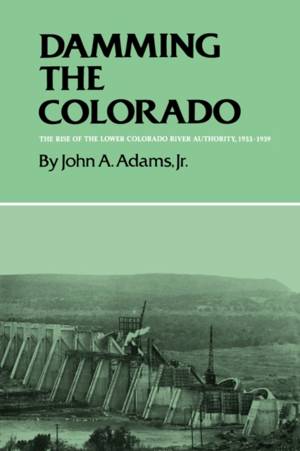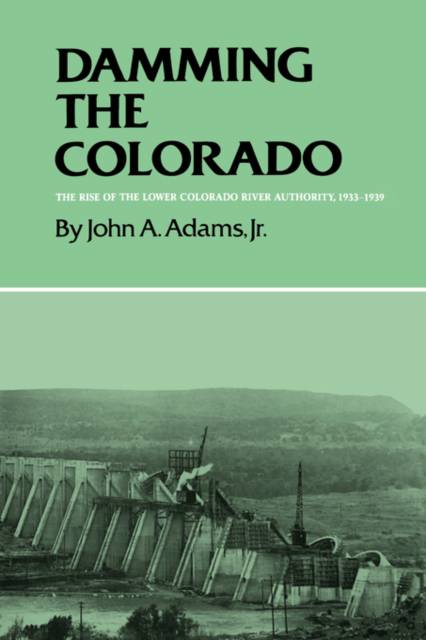
- Afhalen na 1 uur in een winkel met voorraad
- Gratis thuislevering in België vanaf € 30
- Ruim aanbod met 7 miljoen producten
- Afhalen na 1 uur in een winkel met voorraad
- Gratis thuislevering in België vanaf € 30
- Ruim aanbod met 7 miljoen producten
Zoeken
Damming the Colorado
The Rise of the Lower Colorado River Authority, 1933-1939
John A Adams
Paperback | Engels | Centennial Series of the Association of Former Students Texas A & M University (Hardcover) | nr. 35
€ 21,95
+ 43 punten
Omschrijving
Before there was a Lower Colorado River Authority, the Colorado River cut across Central Texas free and unfettered by artificial structures. But the river could be unpredictable and dangerous. In the early years of the twentieth century there were numerous attempts to harness and develop the river. Some Texans desperately wanted private enterprise to achieve that goal, but the job proved to be larger than the resources of the private sector. What emerged in the mid-1930s was a cooperative federal-state approach that created controversy yet results. John Adams details the dynamics in the struggle of private interests and public institutions to cooperate in the taming of the Colorado. The Great Depression further constricted private capital available for large-scale reclamation projects, but the New Deal entered into the effort. With seasoned Texas politicians in Washington, millions of dollars in federal funds were channeled into the Lower Colorado River Authority. The Lower Colorado River Authority resulted in a system of dams, reservoirs, and hydroelectric power stations. Intensive research in primary documents, including four sets of presidential papers, and in state and national archives has enabled Adams to trace the development of the accord and relationships between private utility interests, conservationists, and politicians that finally dammed the Colorado and further cemented the precedent for federally funded water and reclamation projects in the West.
Specificaties
Betrokkenen
- Auteur(s):
- Uitgeverij:
Inhoud
- Aantal bladzijden:
- 184
- Taal:
- Engels
- Reeks:
- Reeksnummer:
- nr. 35
Eigenschappen
- Productcode (EAN):
- 9780890969861
- Verschijningsdatum:
- 1/12/1990
- Uitvoering:
- Paperback
- Formaat:
- Trade paperback (VS)
- Afmetingen:
- 154 mm x 230 mm
- Gewicht:
- 308 g

Alleen bij Standaard Boekhandel
+ 43 punten op je klantenkaart van Standaard Boekhandel
Beoordelingen
We publiceren alleen reviews die voldoen aan de voorwaarden voor reviews. Bekijk onze voorwaarden voor reviews.











